News
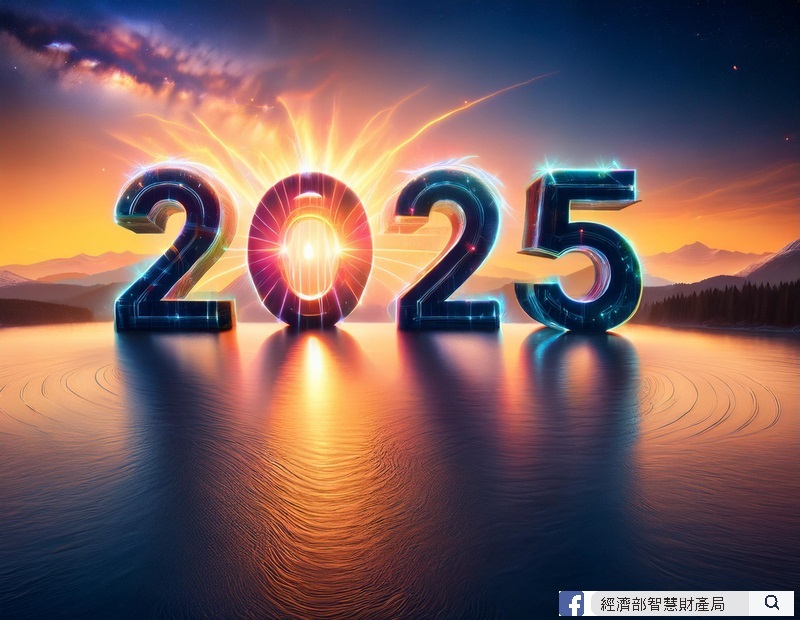 21
21TIPO Publishes 2025.01 Edition of International Patent Classification Information
The information for the 2025.01 edition of the International Patent Classification (IPC) has been published on TIPO’s official website. Starting February 5, 2025, TIPO will adopt the new edition (2025.01) for classifying newly filed patent applications. Consequently, the Patent Gazette will reflect the updated classification starting from the March 11, 2025 issue, and the Invention Publication Gazette will adopt the new classification from the April 16, 2025 issue. 22
22TIPO Releases Report on "Patent Trend Analysis for Key Components in the Electric Vehicle Industry"
To achieve the goal of transitioning to fully electrified transportation by 2050, Taiwan has been actively promoting policies for developing key components of the electric vehicle industry. As electric vehicles continue to evolve toward greater intelligence and higher performance, thermal management and cooling technologies have emerged as critical challenges.On December 2, 2024, TIPO published the "Patent Trend Analysis for Key Components in the Electric Vehicle Industry" report. The report focuses on the automotive industry's response to net-zero carbon emissions and electrification, analyzing patents related to electric vehicle cooling technologies from 2014 to 2023. It categorizes these patents into three main areas: battery cooling, motor cooling, and thermal management systems. Additionally, the report highlights patent trends and shares specific examples within these categories. The report is now available for reference.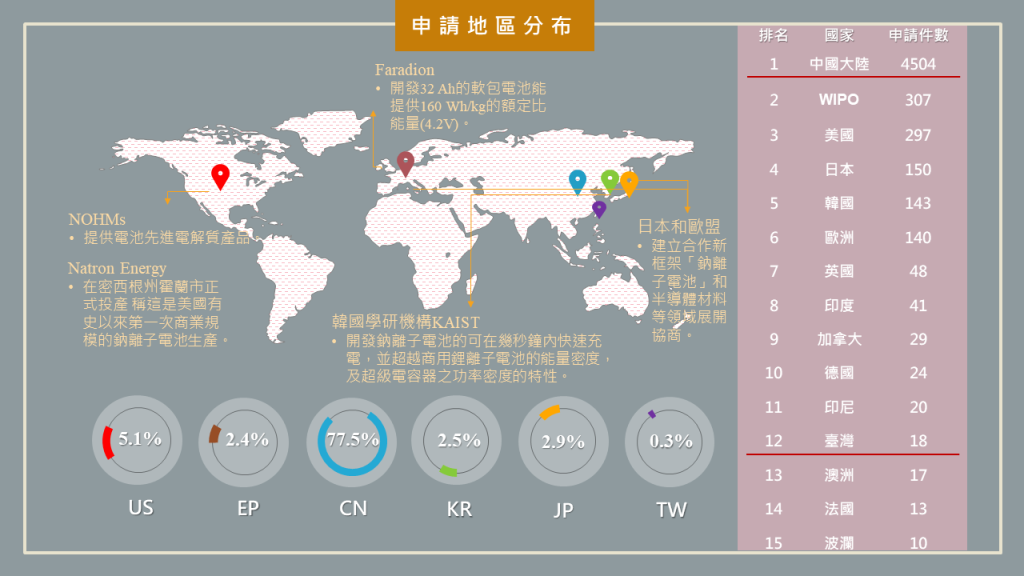 23
23Patent Search Center Releases Two Reports: "Patent Landscape Analysis of 5G and AIoT Integrated Applications" & "Patent Technology Analysis of Sodium-Ion Batteries"
Amid the global trends of achieving net-zero emissions and advancing digital transformation, the development of 5G and AIoT technologies, as well as sodium-ion battery innovations, have become critical focal points. Commissioned by TIPO, the Patent Search Center has completed two patent analysis reports: "Patent Landscape Analysis of 5G and AIoT Integrated Applications" and "Patent Technology Analysis of Sodium-Ion Batteries" - the former examines patent developments related to sensor nodes and network architecture technologies, while the latter provides a comprehensive analysis of patent trends and industrial applications for battery cell materials.These reports aim to provide valuable references for governments and businesses to formulate technology development strategies, plan for future market opportunities, and enhance Taiwan’s competitiveness within the global value chain.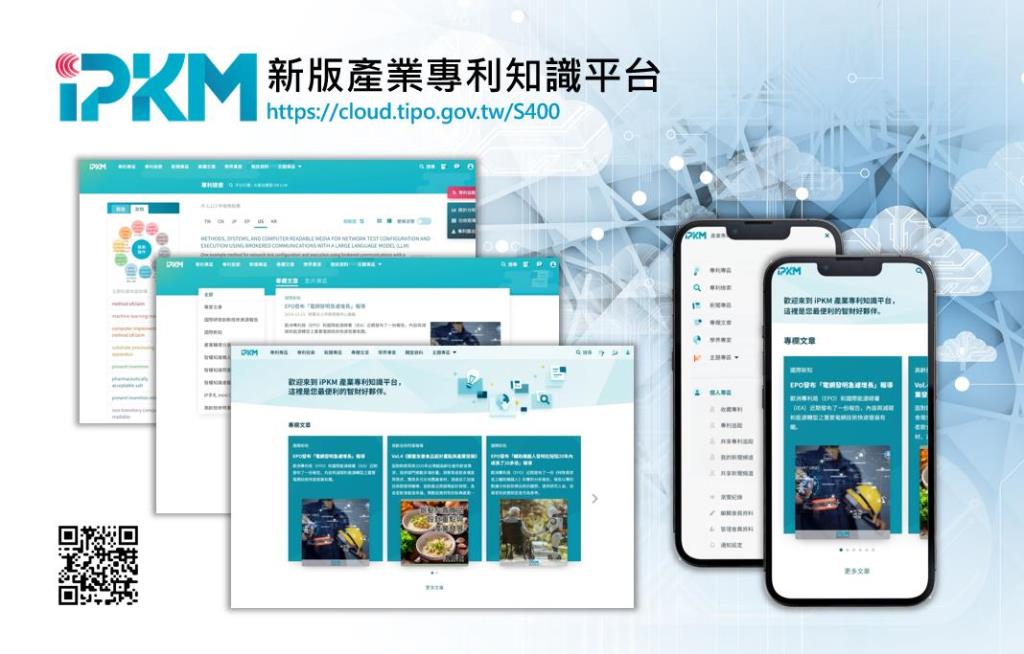 24
24TIPO Launches "Industry Patent Knowledge Platform" Service on the "IP Info Cloud"
In alignment with the government’s cloud policy and to enhance service quality for the public, TIPO has been developing the IP Info Cloud since 2021. Utilizing public cloud infrastructure, this initiative aims to establish a cloud-based service platform with high availability and scalability. As part of this effort, the Industry Patent Knowledge Platform website was successfully migrated to the cloud in 2024 and is now available for trial use.The platform's user interface has been optimized to unify the desktop and mobile versions, supporting seamless browsing across devices such as computers, tablets, and smartphones. Users can easily access resources such as patent documents, expert articles, the latest IP news, information on patent systems from various countries, and insights from academic experts. TIPO welcomes continued support and feedback from users.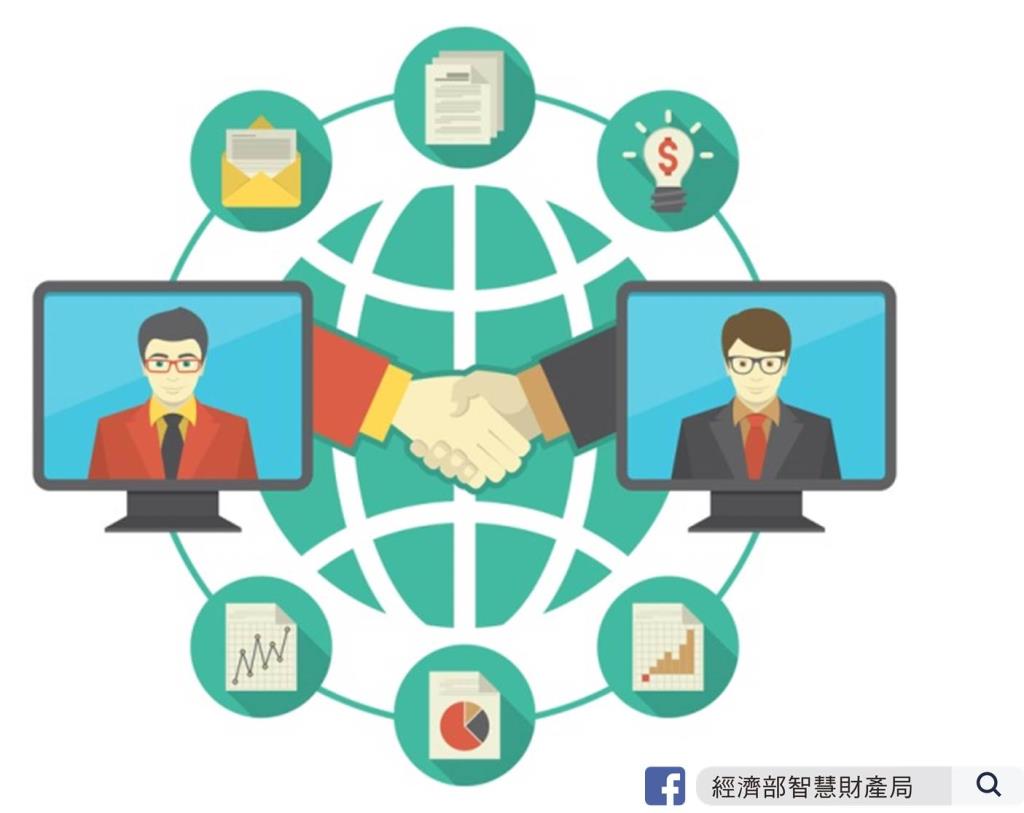 25
25Industry Collaborative Patent Interview Pilot Program Extended to December 31, 2026
The Industry Collaborative Patent Interview Pilot Program, launched in 2023, was initially set to expire on January 2, 2025. To address applicants' need for expedited patent approval and to support the development of their patent portfolios, TIPO has extended the pilot program through December 31, 2026. 26
26TIPO Announces Revised “Positive Patent Examination Pilot Program for Startup Companies”
To enable eligible startup companies that have received national awards or participated in TIPO-sponsored programs to obtain patents within four months of application, thereby strengthening their competitive edge in the industry, TIPO has revised the "Positive Patent Examination Pilot Program for Startup Companies." The eligibility criteria have been expanded from startups established for less than eight years to also include companies with innovative R&D capabilities that have received national awards within the past two years and companies guided by organizations commissioned by TIPO. The revised program took effect on January 1, 2025.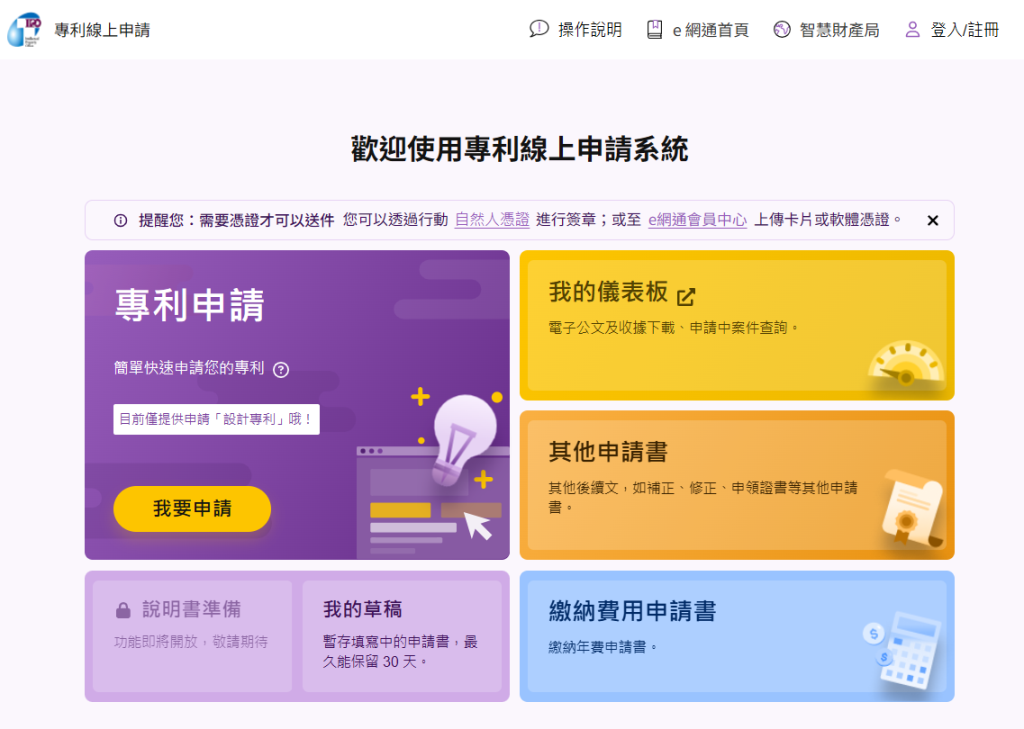 27
27TIPO Launches the Design Patent Online Application System – Now Open to the Public for New Design Patent and Derivative Design Applications!
To streamline online patent applications, TIPO has introduced a brand-new, web-based Design Patent Online Application System. Starting in 2024, the system offers a wide range of features, including new applications, re-examinations, amendments, submissions, issuances, annuity fee payments, making responses, withdrawals, postponements, and assignments related to design patents and derivative design patents.Users no longer need to install standalone tools, as the system is accessible directly through a browser and supports cross-device functionality. 28
28Trial Period for the "Accelerated Examination Pilot Program for Design Patents" Extended by Two Years
To provide more diverse and flexible examination options for design patent applications, TIPO launched the "Accelerated Examination Pilot Program for Design Patents" on September 1, 2023. Initially set to run until December 31, 2024, the program has now been extended through December 31, 2026. A further evaluation will determine whether to continue or modify the program. The details of the program are as follows:1. Application Timing: Applicants may file for accelerated examination for design patents after receiving TIPO’s notification that the preliminary examination is about to begin and before receiving the first Office Action.2. Application Process: Applicants must file electronically in accordance with TIPO’s regulations and provide relevant supporting documents. During the trial period, no application fee will be charged for this program.3. Eligibility Criteria:(1) Criterion 1: Third-Party Commercial ExploitationApplicants must submit documentation proving third-party commercial exploitation (e.g., product catalogs, newspaper, or magazine articles) and specify the third party’s details, the nature of the exploitation, and its starting date.(2) Criterion 2: Recognition by Prestigious Design AwardsApplicants must provide certificates and evidence of the awarded design corresponding to the applicant's name. Eligible awards include:Taiwan's Golden Pin Design AwardGermany's iF Design AwardGermany's Red Dot Design AwardJapan's Good Design AwardThe United States' International Design Excellence Awards (IDEA)(3) Criterion 3: Design Patent Applications by StartupsEach startup is limited to three applications per year under this program. Eligible startups must be companies established for less than eight years under the Company Act or equivalent foreign laws. The establishment period is calculated from the company’s registration date to the design patent application date. If priority is claimed, the calculation is based on the earliest priority date.For foreign companies, proof of the establishment date must be provided along with a Chinese translation. If the document is not an original, a declaration must be submitted.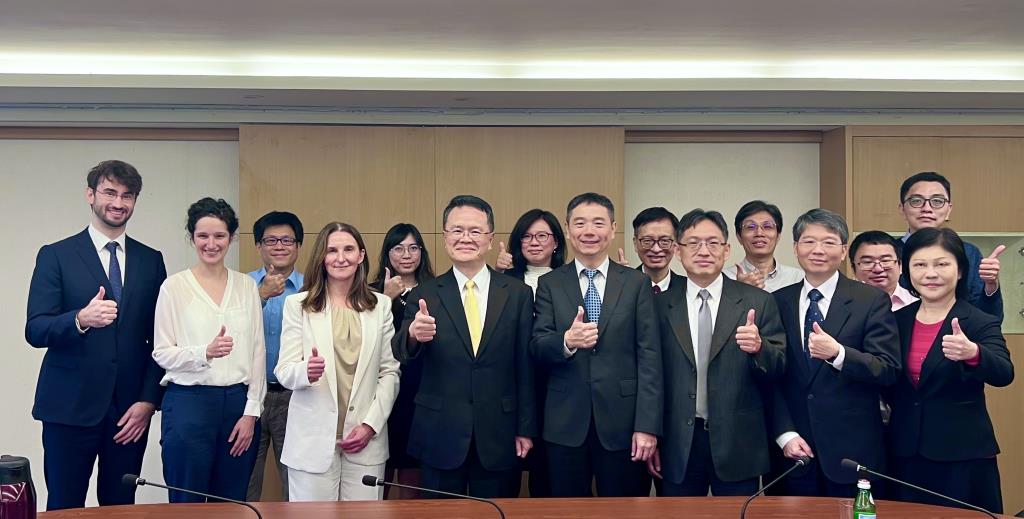 29
29The 4th Canada-Taiwan IP Policy Dialogue was successfully held in Taipei
The 4th Canada-Taiwan Intellectual Property Policy Dialogue was held in Taipei on 3 December 2024.Both sides exchanged opinions on and discussed the following topics: Experience and Outcomes in Digital Transformation; Patent Grace Period; and Promoting IP Awareness.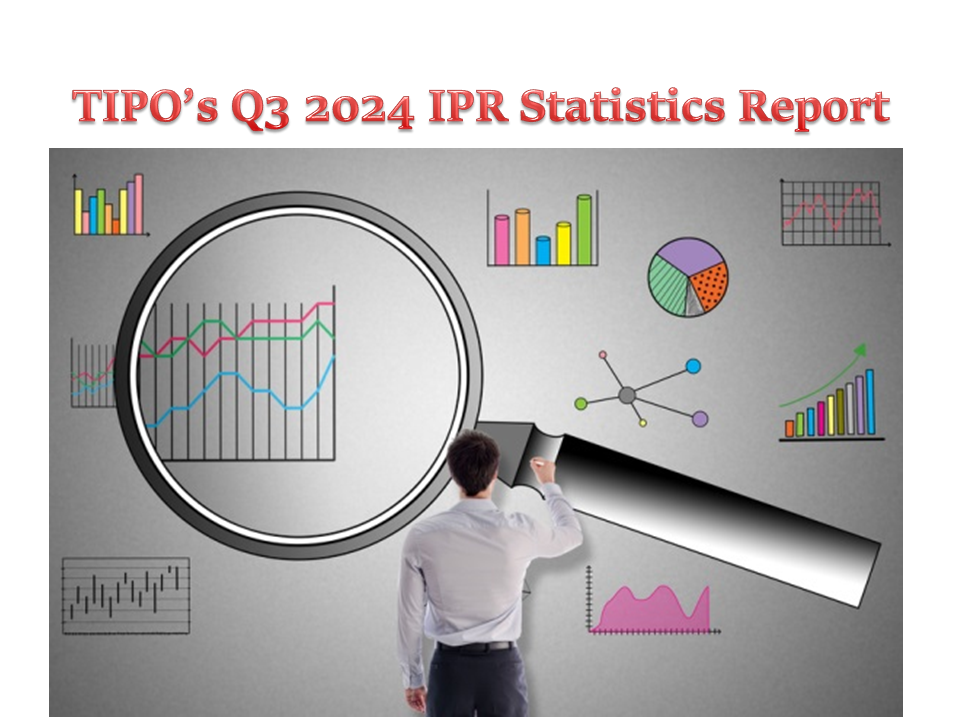 30
30TIPO’s Q3 2024 IPR Statistics Report
I. Overall Trends in Patent and Trademark ApplicationsIn the third quarter of 2024, TIPO received a total of 18,267 patent applications across three categories: 12,739 for invention patents, 3,679 for utility model patents, and 1,849 for design patents, representing a slight 0.2% decrease compared to the same period in 2023. Notably, invention patent applications have exhibited a gradual upward trend over the past five years during the third quarter. Resident applicants accounted for 49% of the total patent applications, while non-resident applicants contributed 51%. Compared to the previous year, applications from resident applicants decreased by 2%, whereas those from non-resident applicants increased by 2% (Figure 1).In the third quarter of 2024, a total of 23,304 trademark applications (covering 29,258 classes) were filed, representing a 1% decrease compared to the same period last year. Among these, resident applicants accounted for 77% and non-resident applicants for 23%. Over the past two years, trademark applications during the third quarter have shown a downward trend, with this year’s decline narrowing to 1% (Figure 2).II. Overview of Patent Applications Filed by ResidentsTop Ten Invention Patent ApplicantsResidents filed 4,857 invention patent applications, with enterprises accounting for 3,881 of these applications. Among the top ten applicants, TSMC ranked first with 331 applications, followed by AU Optronics (99), Inventec (94), Nanya Technology (88), Innolux (84), Delta (81), Hon Hai (76), UMC (75), Realtek (73), and MediaTek (66)(Figure 4). It is worth noting that TSMC has maintained the top position for nine consecutive years since the third quarter of 2016. Delta achieved a record high number of applications, while Hon Hai showed rapid growth, indicating their strategic intent in patent portfolio development.Top Five Design Patent ApplicantsResident applicants filed 790 design patent applications. Among the top five applicants, Tarng Yu led with 16 applications, followed by CGUST and Hsien Chang Optical (both 13). Acer and L&F Plastics ranked next (both 12)(Figure 5). Among them, Hsien Chang Optical set a new record for the number of applications filed, as well as for its own ranking.Overview of Patent Applications Filed by Non-ResidentsFiling Countries (Regions) of Invention Patent ApplicantsNon-residents filed 7,882 invention patent applications. The top five countries (or regions) were Japan with 3,058 applications, followed by the US (1,724), mainland China (898), R. Korea (872), and Germany (252)(Figure 3). In particular, applications from R. Korea have gradually increased, indicating its growing emphasis on strengthening patent portfolios in Taiwan.Top Ten Invention Patent ApplicantsAmong the top ten non-resident applicants for invention patents, Applied Materials from the US filed 254 applications, regaining the top position. It was followed by Samsung Electronics (222) from R. Korea, Qualcomm (202) from the US, Coupang from R. Korea and Tokyo Electron from Japan (both 175), Nitto Denko (101) from Japan, Fujifilm (91) from Japan, ASML (90) from the Netherlands, Kioxia (83) from Japan, and Resonac (71) from Japan (Figure 4). Notably, both Applied Materials and Tokyo Electron achieved record-high filing numbers.Filing Countries (Regions) of Design Patent ApplicantsNon-resident applicants filed 1,059 design patent applications. The top five countries (or regions) were Japan, leading with 221 applications, followed closely by the US (220), mainland China (210), Germany (83), and Switzerland (76) (Figure 3). Significantly, the US was nearly on par with Japan in filing numbers, while mainland China trailed closely behind.Top Five Design Patent ApplicantsAmong the top five non-resident applicants for design patents, Apple (US) led with 50 applications. It was followed by Beijing Roborock from mainland China and BMW from Germany (both 40), China Wonderland (27) from mainland China, and Ford Global Technologies (25) from the US (Figure 5). Notably, Apple retained its leading position, reflecting its strategy of protecting new products through design patents, while Beijing Roborock achieved a record-high number of filings.Overview of Trademark Registration ApplicationsTop Ten Resident Applicants for TrademarksResident applicants filed 17,962 trademark registration applications. Among the top ten applicants, Uni-President ranked first with 236 applications, followed by Bao-Hu Temple Tian-Di Hall (106), Wu, Ruo-Mei (103), Chunghwa Telecom (84), Go Far (78), R&R Medical (67), Cathay Financial Holdings (60), Cathay Life Insurance (55), Microjet Technology (50), and Gamania Digital (44)(Table 1).NICE Classification of Resident ApplicationsThe top three trademark application categories filed by resident applicants were as follows: Class 35 (advertising, business management, retail and wholesale services, etc.) with 3,496 applications, Class 43 (restaurants, lodgings, etc.) (1,629), and Class 30 (coffee, tea, pastries, etc.) (1,481) (Figure 7). This indicates that trademark filings in Taiwan are primarily concentrated in areas related to business operations, consumer services such as hotel and dining, and consumer foods like coffee and pastries.Filing Countries (Regions) of Non-Resident ApplicationsNon-resident applicants filed 5,342 trademark registration applications. The top five countries (or regions) were mainland China, with 1,472 applications, followed by Japan (837), the US (693), R. Korea (540), and Hong Kong (317) (Figure 6). Except for the US, the number of applications from the other four countries (or regions) increased by 15% to 47%.Top Ten Non-Resident Applicants for Trademarks The top ten non-resident applicants for trademark registration were led by Hong Kong's CUYI with 50 applications, followed by Beijing Roborock (44) from mainland China, Boehringer Ingelheim (39) from Germany, Tencent (37) from Cayman Islands, Shizutetsu (34) from Japan, Frasers Property from Singapore and Beijing Jingdong from mainland China (both 32), L'Oreal (28) from France, and LG H&H and HanGo from R. Korea (both 24) (Table 2). NICE Classification of Non-Resident ApplicationsThe top three trademark application categories filed by non-resident applicants were as follows: Class 9 (computers and technology products, etc.) with 985 applications, Class 35 (advertising, business management, retail and wholesale services, etc.) (589), and Class 3 (cosmetics and detergents, etc.) (579) (Figure 8). Non-resident applicants primarily focused on trademark registration for computer and technology products under Class 9.Analysis of Applications by IndustryMost trademark applications were classified under “Agriculture” with 5,844 applications, followed by "Health" (4,810), and "Business Services" (4,628) (Figure 9).Among the top three industries for trademark applications, resident applicants are concentrated in "Agriculture" with 4,714 cases, primarily for trademarks related to restaurants and accommodations. Non-resident applicants have the highest number in "Research and Technology" with 1,514 cases (Figure 9). Additionally, resident applicants saw a 2% increase in filings under the "Health" category, while non-resident applicants experienced a 22% increase in filings under the "Agriculture" category, with both showing growth.Note: The above statistical data is based on the “first applicant” of the applications when referencing applicants and nationalities.Reference URL: https://www.tipo.gov.tw/en/lp-302-2.html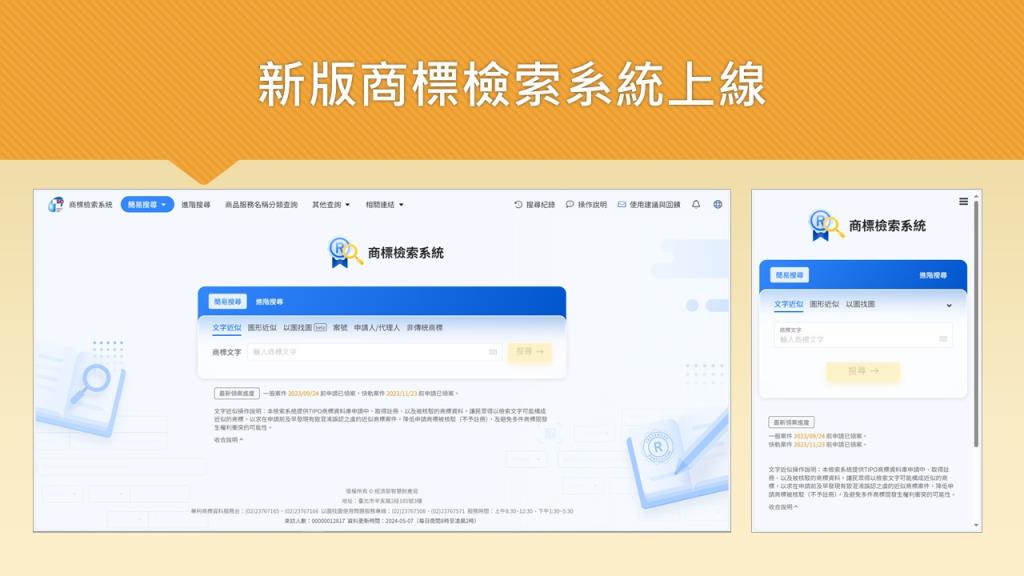 31
31TIPO Launches New Trademark Search System
To improve usability and support mobile browsing, TIPO has launched a new Trademark Search System with simplified and advanced search features to meet the needs of different users. The new system also increases the number of displayed search results to 1,000 entries, reducing the need to repeatedly narrow search criteria.The old system will no longer be available from March 2025. Users are encouraged to switch to the new system.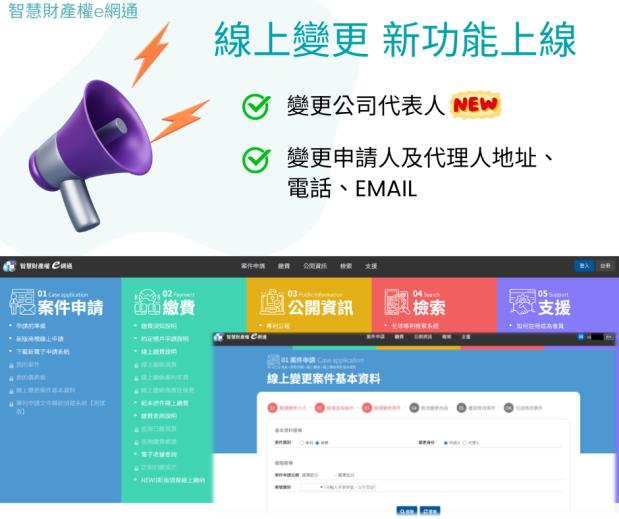 32
32TIPONet Expands Online Services for Changing Applicants’ Representatives
To facilitate changes for patent and trademark applicants and reduce the need for administrative correspondence between applicants and TIPO, TIPO has expanded the online services available through TIPONet. Starting October 15, 2024, applicants can now use the platform to change their representatives. After logging in to TIPONet, applicants or their patent agent can select the "Applying for a patent/Changing Online" feature to modify basic case information, including:1. The name of the applicant’s representative in Chinese and English.2. The applicant and their patent agent’s address in Chinese and English, phone number, and email address.For assistance with technical issues, please contact the TIPONet Customer Service Line or Email: [email protected].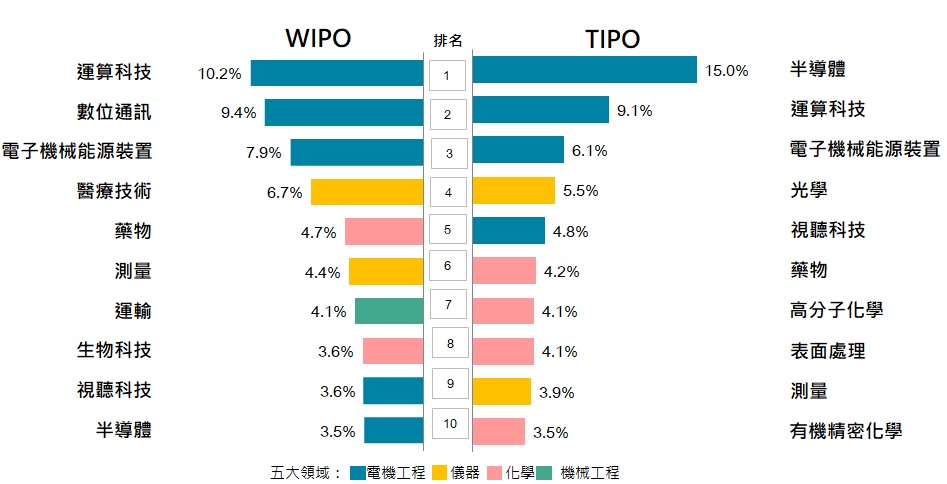 33
33TIPO Releases 2023 Trends & Comparisons: Taiwan Invention Patent Applications and WIPO PCT Applications
The 2023 Trends & Comparisons: Taiwan Invention Patent Applications and WIPO PCT Applications released by TIPO revealed that WIPO received an estimated 272,600 PCT invention patent applications in 2023, a 1.8% year-on-year decrease, ending a 13-year growth streak. In contrast, TIPO received 50,854 applications, marking a 1.2% increase.In 2023, the top three technical fields for WIPO applications were Computer Technology (10.2%), followed by Digital Communication (9.4%) and Electrical Machinery, Apparatus, and Energy (7.9%). For TIPO, the top field was Semiconductors (15.0%), followed by Computer Technology (9.1%) and Electrical Machinery, Apparatus, and Energy (6.1%).Regarding the primary countries/regions and their focus areas under WIPO patent filings, China had the highest share in Digital Communication (15.6%), while the United States focused most heavily on Computer Technology (12.9%). Japan (11.3%) and Germany (11.8%) predominantly filed in the field of Electrical Machinery, Apparatus, and Energy, whereas South Korea showed an equal focus on Electrical Machinery, Apparatus, and Energy and Digital Communication (both at 11.2%). In comparison, Taiwan, China, the United States, Japan, and South Korea all ranked Semiconductors as the top field under TIPO filings, with shares ranging from 12.5% to 25.7%.Under WIPO patent publications, China’s Huawei ranked first for the seventh consecutive year with 6,494 applications, followed by South Korea’s Samsung Electronics (3,924 applications) and the United States’ Qualcomm (3,410 applications). For TIPO patent publications, TSMC (Taiwan Semiconductor Manufacturing Company) took the top spot for the fifth consecutive year with 1,582 applications, followed by Applied Materials (794 applications) from the US, Samsung Electronics (747 applications) from South Korea, and Qualcomm (695 applications) from the US. Notably, both Samsung Electronics and Qualcomm were included among the top 10 applicants in WIPO and TIPO filings.For WIPO, six of the top 10 applicants, including Huawei, focused most heavily on the Digital Communication field. Huawei, in particular, allocated 41.8% of its filings to Digital Communication, followed by Computer Technology (22.7%) and Telecommunications (9.5%), comprising a combined share of 74.0%. Under TIPO, six of the top applicants, including TSMC, concentrated on Semiconductors, with TSMC allocating the largest proportion at 78.1%.Samsung Electronics displayed contrasting filing priorities between WIPO and TIPO, with Digital Communication as the top field for WIPO and leading with Semiconductors for TIPO. Qualcomm, however, maintained Digital Communication as its highest-priority field across both WIPO and TIPO, demonstrating minimal variation in its filing strategy.In Taiwan, Hsinchu City recorded the highest number of invention patent applications with 4,842 filings, setting a new all-time high. It was followed by Taipei City (3,058 filings) and New Taipei City (2,989 filings). The combined filings from the Taipei-Hsinchu region accounted for 72.4% of all domestic invention patent applications.The 2023 Trends & Comparisons: Taiwan Invention Patent Applications and WIPO PCT Applications is now available on TIPO’s official website for public reference.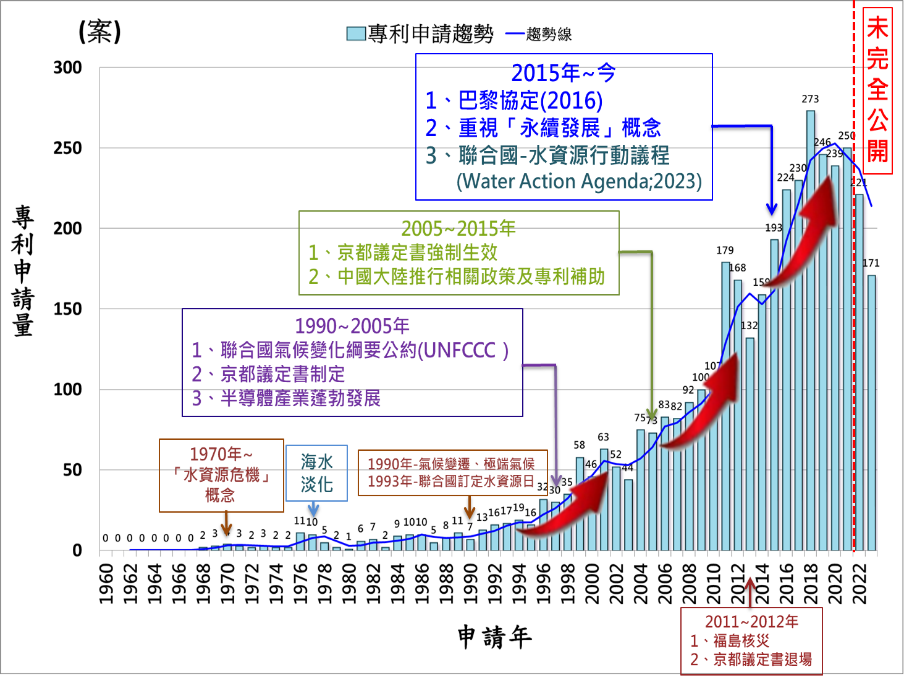 34
34TIPO Releases the Patent Trends on Wastewater Treatment and Recycling Technologies in Semiconductor Industry Report
In line with Taiwan's vision for the sustainable development of the semiconductor industry, TIPO has released the Patent Trends on Wastewater Treatment and Recycling Technologies in Semiconductor Industry Report. The report shares concrete case studies and offers an in-depth analysis of patent development and technology trends in this field, serving as a key reference for industry efforts in promoting green transformation.The report highlights that over the past 20 years, there has been a significant increase in global patent applications related to wastewater treatment and water recycling technologies, reflecting the strong focus of businesses on sustainability and ESG (Environmental, Social, and Governance) issues. Through advancements in wastewater recovery and water recycling technologies, the global semiconductor industry has made notable progress toward sustainable water resource management. As one of the world’s major producers of semiconductor components, Taiwan has a well-established industry chain and technological foundation, with R&D achievements comparable to those of the US, Japan, and Europe. This contributes significantly to Taiwan's goal of achieving net-zero transformation by 2050.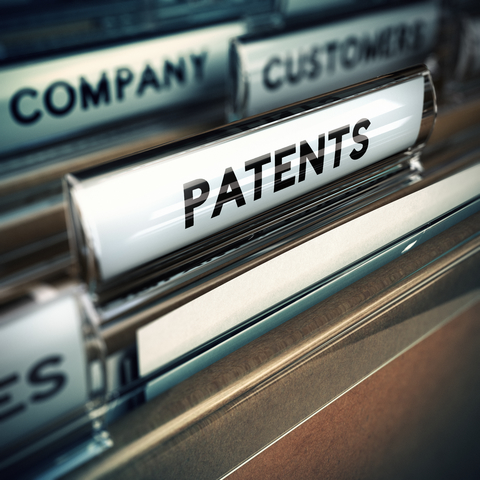 35
35TIPO Publishes English Version of Patent Examination Guidelines, Part II: Substantive Examination for Invention Patents, Chapter 6 “Amendments”
TIPO has released the English version of the Patent Examination Guidelines, Part II: Substantive Examination for Invention Patents, Chapter 6 “Amendments” to enhance the international IP community’s understanding of Taiwan’s patent examination process.This chapter outlines the appropriate timing for proposing amendments and explains how admissibility is evaluated during the examination process. Moreover, it functions as a helpful tool for foreign applicants, enabling them to assess whether their patent applications meet specified Guideline requirements. 36
36New System for Telephone Communication with External Examiners and Remote Video Interview Launched Officially on September 1
Starting September 1, 2024, TIPO has introduced the Optimization Program for Telephone Communication and Remote Video Interviews with External Examiners on a pilot basis. Invention patent applicants can now use TIPO's three-way conference call system to facilitate real-time communication and exchange of opinions between the applicant or their representative, the external examiner, and TIPO examiners. For more complex cases or those requiring demonstrations, a remote video interview can also be arranged, allowing direct interaction with the external examiner and TIPO examiners. This initiative is designed to enhance the quality of patent applications and improve the efficiency of the examination process. 37
37TIPO Invites German IP Experts to Speak in Taiwan
On September 5, 2024, TIPO invited Klaus Bacher, Presiding Judge of the Federal Court of Justice of Germany, along with patent attorneys and partners Dr. Heinz Goddar and Dr. Ute Kilger at Boehmert & Boehmert, to talk on topics such as the "German Federal Court of Justice Ruling on the DABUS Case," the "EU Supplementary Protection Certificates (SPC) and SPC Manufacturing Waiver," and the "2024 EU Artificial Intelligence (AI) Act."The talks featured lively exchange, contributing to a deeper understanding within TIPO of the differences in inventor determinations between Germany, the EPO, and the US, as well as insight into the EU’s Pharmaceuticals Package amendment proposal and the AI Act, which will take effect on August 1, 2024, in the EU.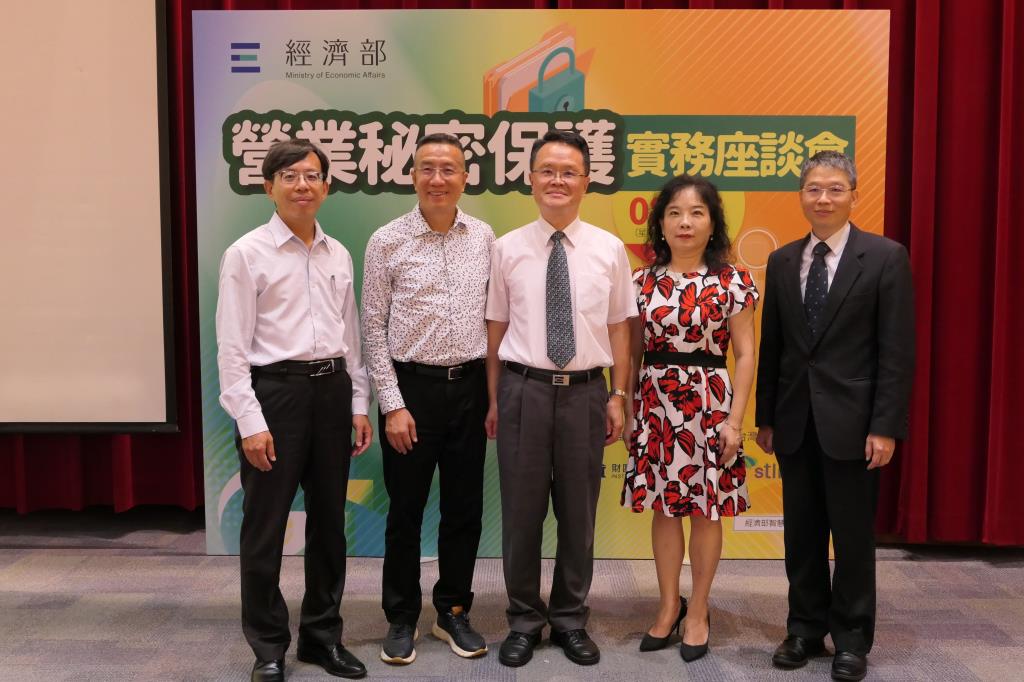 38
38TIPO's Practical Trade Secret Protections in Enterprises Seminar Session for Northern Taiwan Successfully Concludes
To help businesses strengthen their trade secret protection mechanisms, TIPO held the Practical Trade Secret Protections in Enterprises Seminar in Northern Taiwan on August 15, 2024. The Taiwan Association for Trade Secrets Protection was invited to share practices on "How Business Owners Can Protect Trade Secrets."The seminar included a panel on "Trade Secret Protection and Non-Competition Agreements." The panel was moderated by Director-General Cheng Yi-Yi of the Judicial Yuan and included panelists such as Associate Professor Chen Lung-Sheng, Executive Director Su Wen-Tang, Attorney Hsiung Sung-Mei, and Chief Judge Tsai Zse-Hong of the Judicial Yuan shared their insights on non-competition practices in Taiwan, court jurisdiction, and the potential impact of the recent U.S. Federal Trade Commission (FTC) ban on non-compete agreements, as well as strategies for businesses moving forward. The seminar saw lively discussions between experts and participants from the legal, academic, and business sectors, concluding successfully. 39
39TIPO Publishes the 2023 Compilation of Selected Court Decisions on Trade Secret Cases on Official Website for Public Reference
To promote public understanding of the development of trade secret judicial practices in Taiwan, TIPO has published the 2023 Compilation of Selected Court Decisions on Trade Secret Cases.22 cases were selected by sifting through 67 civil and criminal decisions relating to trade secrets in 2023, and then examined and categorized based on key issues: the three elements of trade secrets, trade secrets infringement, and trade secrets related rulings Court decisions were summarized, compiled, and have been published on TIPO's official website as of August 13, 2024 in the Trade Secrets section for public reference.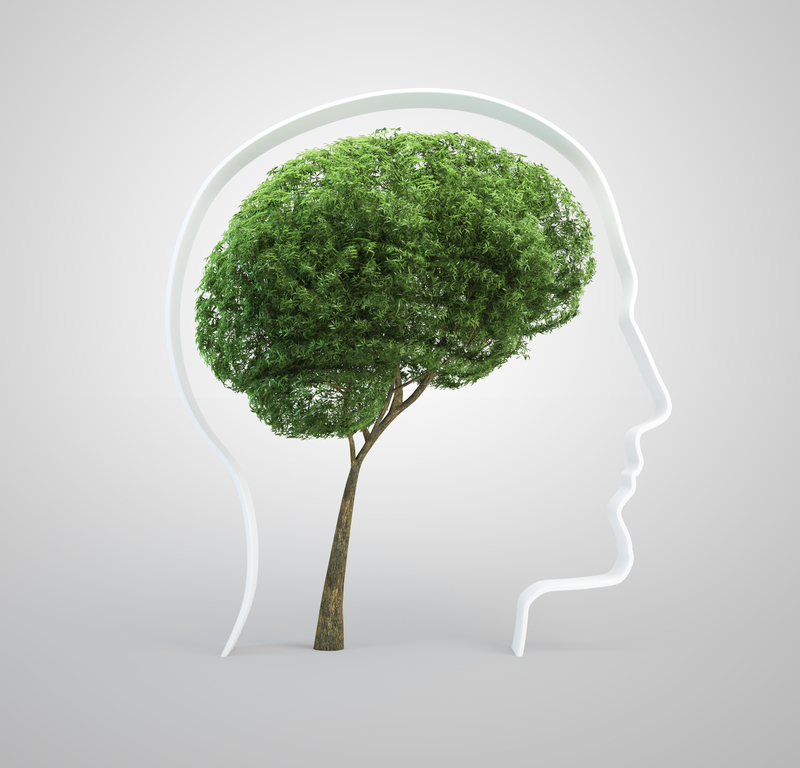 40
40TIPO Releases Analysis of Taiwan's Green Trademark Industry – Now Available for the Public!
Following the 2023 publication of the Comparative Analysis of Taiwan's Green Trademark Industry in the Last Ten Years, TIPO has continued its research by incorporating the latest statistics to analyze the current state of Taiwan's green trademark industry. The newly completed Analysis of Taiwan's Green Trademark Industry offers insights for businesses on how to strategically position their green trademarks to address global climate change and net-zero emission strategies.Referring to the European Union’s definition of green trademarks, TIPO defines "green trademarks" not by the "trademark reproduction" itself but by the designated goods and services contained in the trademark applications and their Nice Classification. The report examines the distribution of applications over the past decade in nine major categories: energy products, transportation, energy conservation, reuse/recycling, pollution control, waste management, agriculture, environmental awareness, and climate change. It also includes data on the number of applications, percentages, and trends in each category.Over the past decade, green trademarks have accounted for approximately 14.49% of all trademark applications in Taiwan, demonstrating an increase from an average of 13.00% in the early period (2014-2016), 15.31% in the mid-term (2017-2020), to 14.64% in the later period (2021-2023). While there was a slight decline in the latter period compared to the mid-term, the long-term trend demonstrates a growing awareness of carbon reduction, low-carbon initiatives, and green energy within trademark applications. The top three categories are energy conservation, pollution control, and energy products, accounting for nearly 80% of all green trademark applications, highlighting the industry's focus in these three key areas.

 Sitemap
Sitemap FAQs
FAQs Feedback
Feedback Bilingual Glossary
Bilingual Glossary